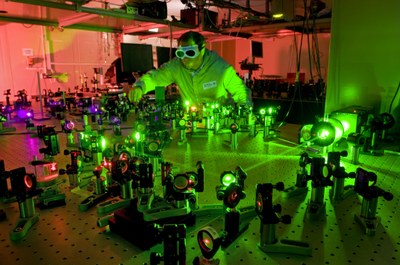Joint Research Activities 2015-2019
 The topics of the JRAs are selected in order to facilitate major improvements, beyond the present state-of-the-art, of the participating RIs and their services, in particular their abilities to enable novel applications with high industrial and social impact. They will help preparing the Consortium and its Users for the future, in synergies with ESFRI infrastructures such as European XFEL, EUROFEL and ELI. The following four JRAs will be pursued:
The topics of the JRAs are selected in order to facilitate major improvements, beyond the present state-of-the-art, of the participating RIs and their services, in particular their abilities to enable novel applications with high industrial and social impact. They will help preparing the Consortium and its Users for the future, in synergies with ESFRI infrastructures such as European XFEL, EUROFEL and ELI. The following four JRAs will be pursued:
- Biomedical Optics for Life Science Applications - BIOAPP (Coordinator: Francesco Pavone, LENS)
- Innovative Laser Technologies - ILAT (Coordinator: Joachim Heim, HIJ-IOA)
- Photonic Techniques for Material Analysis, Nanoscience and Sensing - PHOTMAT (Coordinator: Mike Towrie, CLF)
- Laser-driven High Energy Photon and Particle Sources towards Industrial and Societal Application - LEPP (Coordinator: Marta Fajardo, IST)
Biomedical optics is an emerging research field involving photonics, optics, imaging, bioengineering, materials science, with many translational and technology transfer aspects. This development was highlighted in the LASERLAB-EUROPE Foresight Workshop – Lasers for Life, organized at the Royal Society, London, with participations from Laser RIs, industries, medical centres, research institutes and hospitals. BIOAPP will pursue key developments in innovative workstations and methodologies, ranging from the investigation of single bio-molecules and single cells to in-vivo microscopy on living animals to the development of biomaterials and diagnosis tools for human diseases. Three main activities are envisaged: (i) Bioimaging and biosensing; (ii) Bio-materials; (iii) Translational research. Extension of the User basis, especially towards the biologist and medical doctor communities, will be pursued through cooperation with medical partners and European medical societies and establishment of “Joint Research Labs”. The JRA objectives are also aiming to create substantial technological developments helping strong connections with industries for the exploitation and capitalization of the results. A network formed by several collaborating industries and hospitals will boost the development of specific deliverables and bring additional value to the project. Connection with hospitals and clinics will also allow to test directly on patients some of the developed diagnostic and therapeutic tools.
Advanced laser technology is the basis for a huge amount of scientific explorations and plays an ever increasing role in industry due to laser based applications. ILAT undertakes three main objectives: (i) solve crucial laser physics bottlenecks in order to make available to LASERLAB-EUROPE’s future Users a new generation of laser sources with improved performances; (ii) involve industrial partners; (iii) provide sizeable synergies with ESFRI infrastructures in terms of both strategic laser technology development and training of a new generation of laser physics experts. By improvements of high peak power laser driver performances in terms of increasing stability, efficiency, energy, repetition rate, power and reliability, a next generation of radiation sources in the THz-Mid-IR and XUV-X rays will be made available for an increasingly number of complex and sophisticated applications.
Photonic techniques play a pivotal role in material analysis, in the development of the next generation of materials, in the advancement of nanosciences and in environmental sensing. The challenges and complexity of problems faced by modern sciences critically call for major advancement in photonic analytical capability. PHOTMAT aims at providing such capability for future frontier research by integrating state of the art and newly developed photonic sources into high performance stations providing advanced analytical capabilities in temporal, spatial and compositional domains at the cutting edge and beyond. This development is tailored to enable a broad, multidisciplinary portfolio of Users in areas of relevant societal and industrial impact as advanced material characterisation and environmental sensing.
The interaction of intense lasers with targets, ranging from gas to solid density, can generate sources of energetic particles with unique properties that have opened new avenues for research and hold the promise of tremendous societal and technological impact. The recent progress in laser-driven sources of high energy photons, electrons and protons has been outstanding and in several cases also pioneered by LASERLAB- EUROPE partners. The aim of LEPP is to further develop the techniques required for production of high quality beams and to explore the use of these beams in targeted high impact applications in medicine, biology and material science. The work will take advantage of the world leading LASERLAB-EUROPE partners and of their local network of companies, SMEs, and hospitals, on the planned dedicated beamlines for

